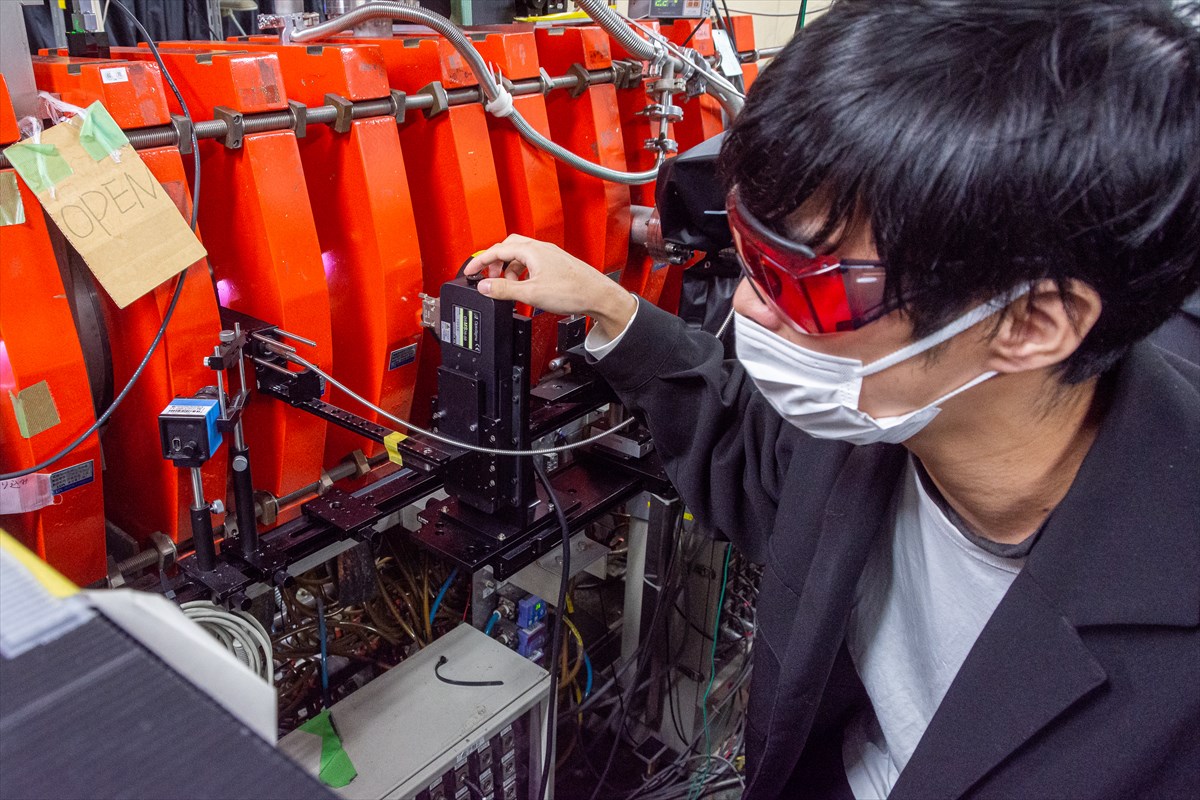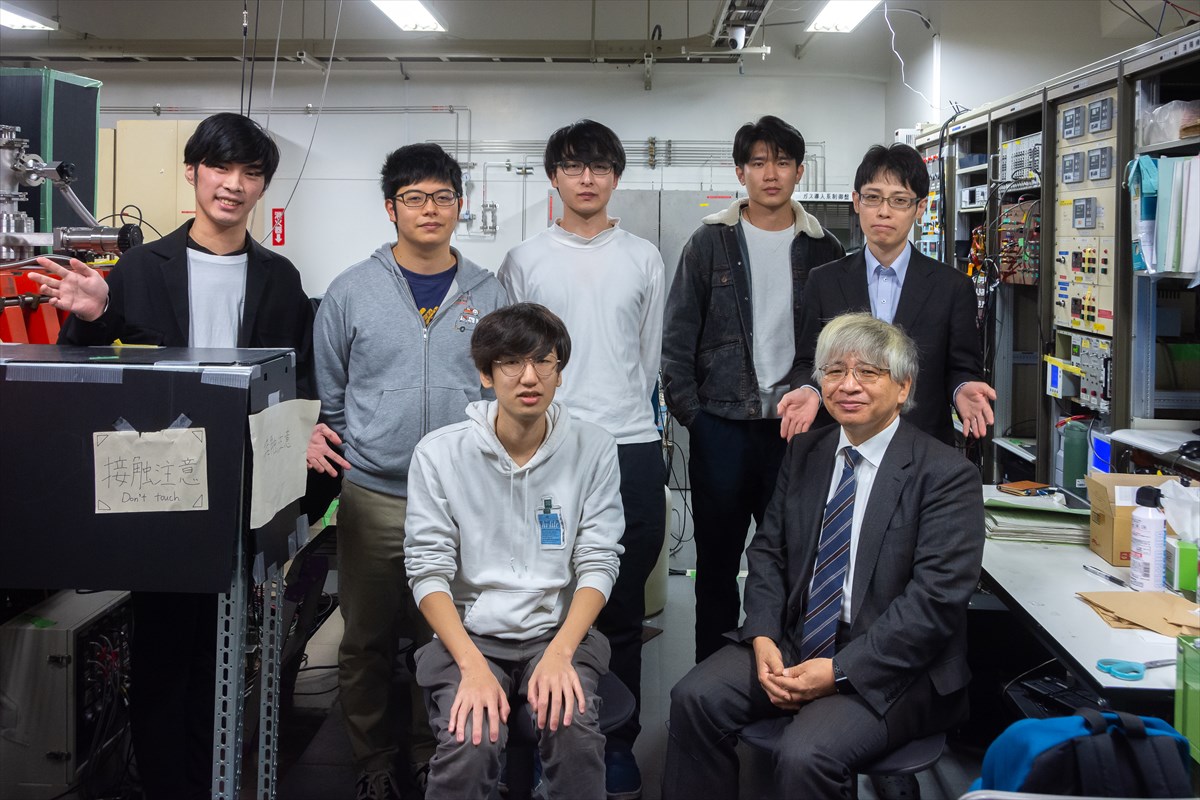You may have seen the word “plasma”, but do you know what it is? Fluorescent lamps, which we are familiar with, use plasma to emit light. Lightning and the beautiful aurora borealis dancing in the sky are examples of plasma occurring in nature. The source of such huge energy, which we might call the boss of all types of plasma, is the sun.Currently, there is a grand research project on “nuclear fusion power generation” being carried out worldwide. This power generation technology uses pasma to create incredibly high energy in a process similar to that of the sun. Indeed, Japan, especially Nagoya University, is playing a central role in this research project. We’ve heard that Ohno Laboratory is taking an important role in the final stage of the project.In this interview, we asked Professor Ohno and Associate Professor Tanaka about the basics of plasma and also asked some simple questions such as “What is plasma?” and “Is nuclear fusion safe?”. They answered those questions in a way that is clear and accessible even to beginners.
| What is “plasma”? |
▶First of all, could you tell us about plasma?
Ohno: For example, the light we see in a fluorescent lamp is plasma. What we learned in high school physics is that when you heat a solid, it becomes liquid. When you heat it further, it becomes gas. If you heat it even more (up to about 10,000°C or higher), nuclei that originally have a positive charge and electrons that orbit the nuclei separate from the molecules and atoms of the gas and fly around freely. This state is called plasma (see [figure 1]). Because plasma has very high energy, it can induce various phenomena that cannot occur in liquids, gases, or solids. This is a very interesting property, so I have been studying it for a long time.
▶So, your research is not just about plasma for achieving nuclear fusion power generation.
Ohno: I think nuclear fusion power generation is an application of plasma. Numerous applied technologies use plasma. Particularly in the industrial field, whether you’re making semiconductors or anything else, you’re using plasma at some stage (see [figure 2]). One of our research targets is to “create the plasma we want to create”, in other words, to create a one-of-a-kind plasma. Currently, my goal is to create plasma with extremely high density, which is about 100,000 times higher than that of the plasma in a fluorescent lamp.
▶Plasma is used in so many different places.
Ohno: The boss of all types of plasma found in nature is the sun. It has been discovered that the sun is a mass of plasma composed of hydrogen, helium, and magnetic fields. Nuclear fusion power generation is the idea of generating artificial solar energy on Earth to generate power. The power generation mechanism is the same as that of thermal power generation. Japan, the United States, Europe, and Russia are working together as advanced countries to put it into practical use by 2050. However, recently, with environmental concerns becoming more critical, each country is advancing the target year to 2040.
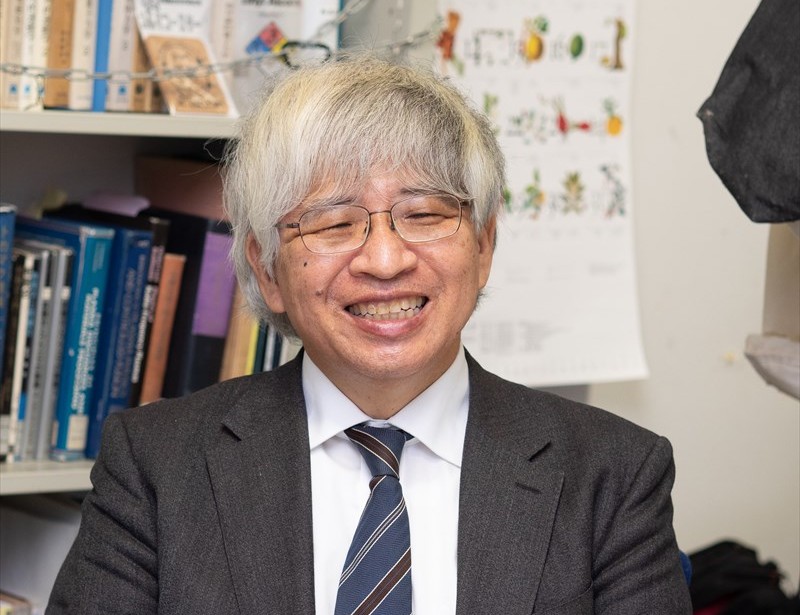
Professor Noriyasu Ohno
[profile]
1988: Left the doctoral program at Kyushu University and appointed as Assistant Professor at Nagasaki University.
1990: Assistant professor at Nagoya University.
1993: Obtained his doctorate in science and appointed as Lecturer at Nagoya University.
2001: Associate Professor at Nagoya University.
2008: Professor at Nagoya University.
●Hobbies and passions: Shogi (Japanese chess). Watching sports. Reading (mainly history). My shogi skills are not improving, so I’m currently enjoying watching shogi. With a good selection of shogi content available on internet broadcasts, I can watch shogi all day long. My family may think I’m too obsessed with it.
-
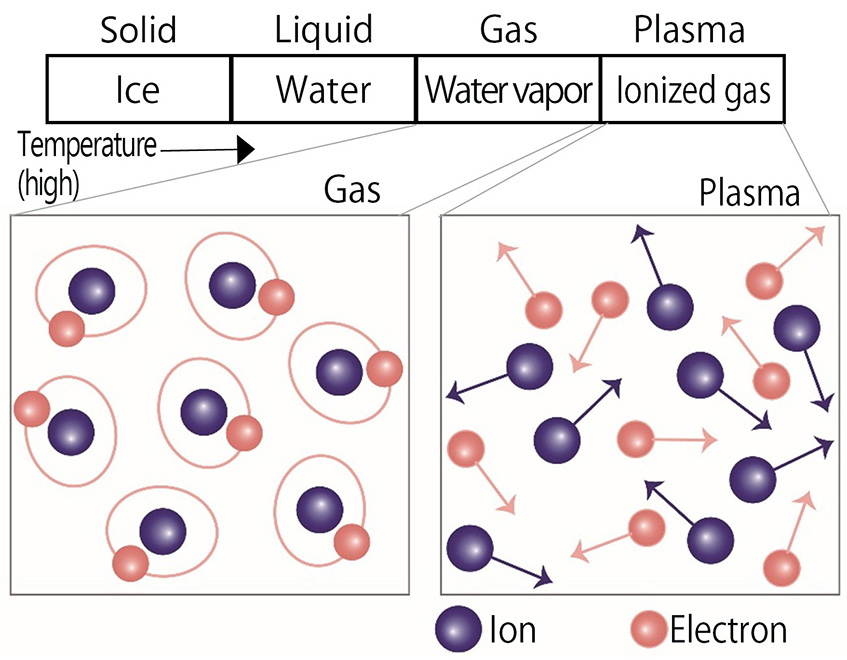
[figure 1] Examples of plasma: four states of water
-
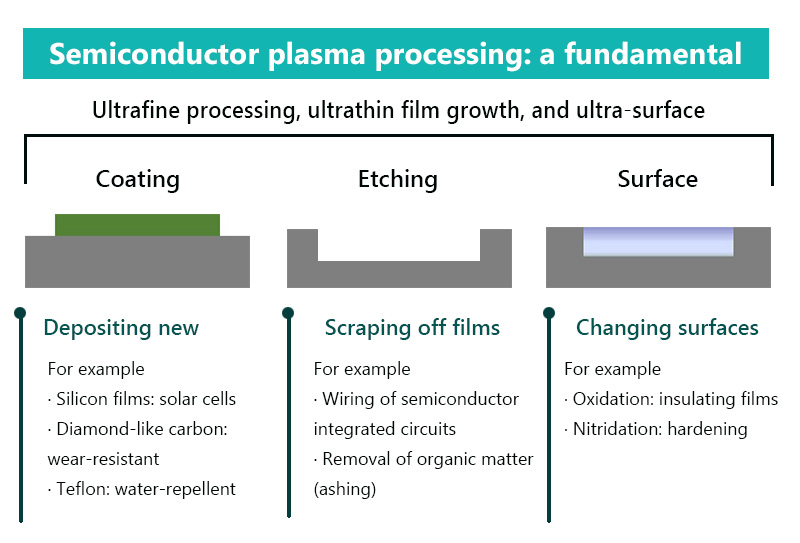
[figure 2] Applications of plasma
| How is nuclear fusion power generation different from nuclear fission power generation? |
▶Are there any risks like those involved in nuclear fission power generation?
Ohno: In terms of converting mass into energy, as expressed in the famous formula E = mc² proposed by Einstein, nuclear power generation that uses nuclear fission and nuclear fusion are both in the same category. I’m not an opponent of nuclear fission power generation. However, the crucial difference is that, in the case of nuclear fission, the problem of accumulation of large amounts of high-radioactivity waste is inevitable. Although nuclear fission power generation is a very efficient technology, there are difficulties in deciding on the final disposal sites. On the other hand, nuclear fusion hardly produces any high-level radioactive waste, so it does not require special disposal sites.
▶Assuming that safety is ensured, isn’t there any concern about the depletion of energy sources?
Ohno: What makes this research so attractive is that the energy sources needed for nuclear fusion power generation are the hydrogen isotopes deuterium (symbol D) and tritium (symbol T). They can be obtained from seawater and lithium, which are widely distributed around the world. One gram of deuterium is contained in 30 liters of seawater, and when one gram of hydrogen fuel is burned in nuclear fusion power generation, it is converted into energy equivalent to that produced from about eight tons of petroleum oil. Furthermore, deuterium is uniformly distributed across the world. This is important. Because no country can monopolize it, there is no war. If nuclear fusion power generation is realized, humanity will be freed from energy issues. This is the main reason why nuclear fusion power generation is being studied all over the world.
I see. Now, we truly hope for the success of nuclear fusion.
▶By the way, what made you get involved in plasma research?
Ohno: I entered the Department of Physics at Kyushu University without any clear goals, but with a vague desire to study physics. As an aside, at that time, Dr. Kitamura, a wintering member of the first Japanese Antarctic Research Expedition and the (real) protagonist of the film “Antarctica”, which became famous for the dogs Taro and Jiro, was studying plasma in nature at Kyushu University. When the filming was about to start, the main actors came to interview Dr. Kitamura. That is where I first heard the word “plasma” and about studies like measuring the aurora in space or the electromagnetic waves pouring down on Africa.
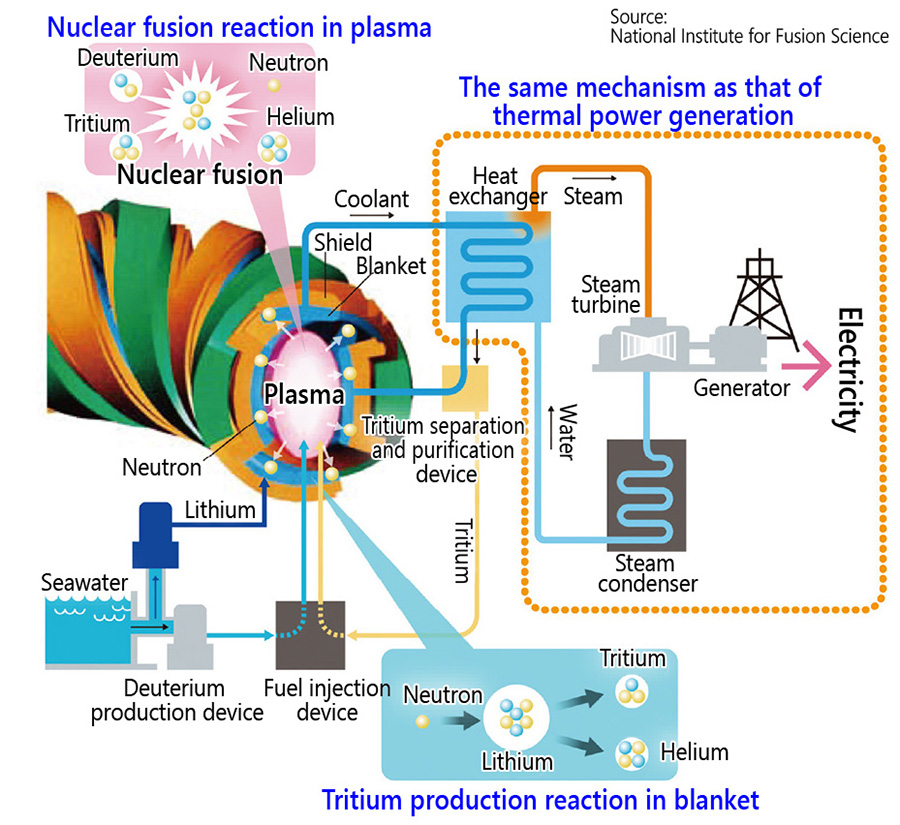
Mechanism of nuclear fusion power generation
| Fateful encounter |
▶So that’s why you chose plasma?
Ohno: Plasma seemed like something distant from me at that time, so I chose to study condensed matter theory in my fourth year. It was interesting, but Kyushu University at the time was surrounded by bars and mahjong parlors. I thought it would be better to think of a way to escape from these surroundings, and as I was walking down the corridor, I happened to see a poster advertising the opening of a graduate school campus in the area that is now Kasuga City. I went there to take a look. The researchers I met there explained how plasma is interesting and they urged me to come and study with them, so I ended up joining them.
▶That was a fateful encounter.
Ohno: There are three main areas of plasma research: (1) basic research, (2) applied research, and (3) nuclear fusion. At that time, a large nuclear fusion device had just been built in Kasuga, so I was thinking of studying nuclear fusion. However, the head of the department at the time told me earnestly, “Young researchers like you should study the basics of plasma first rather than jumping straight into nuclear fusion research”. So, I joined his laboratory without much consideration. I proceeded to the doctoral program because I had no particular plans to work at a company. When I was in my first year of the doctoral program, I was told that a professor at Nagasaki University who was working on plasma applications was looking for an assistant, so I decided to quit the university and go to Nagasaki.
▶So, you moved into the field of applied research.
Ohno: Yes. There, I was involved in experiments like using plasma to make solar cells, forming a film on the surface of a blade to extend its lifespan, or applying oxygen plasma to plastic wrap to make it sticky. After about three years, I was told to go to Nagoya University because Professor Takamura was looking for an assistant. I was a bit reluctant to cross the Kanmon Straits (lol), but the Plasma Research Institute at Nagoya University was the starting point for plasma research in Japan. Nagoya is considered the Mecca of plasma research, so I decided to go there anyway.
| Key points to achieve nuclear fusion power generation |
▶You started researching nuclear fusion when you came to Nagoya University, right?
Ohno: Yes. I think I was lucky because I ended up working in all areas of plasma, from the basics to applications and nuclear fusion, so I have contacts in all those areas. Nuclear fusion power generation has already been possible for short periods, lasting just a few seconds. It has been theoretically established, and we are now in the stage of technical research to achieve it for longer periods. However, since there is much that remains unknown about nuclear fusion power generation, cooperation across areas is essential. The current major challenge is finding the most suitable material for the walls of fusion reactors. For the past decade or so, we have been conducting research on what happens when plasma is irradiated onto tungsten (symbol W), which can withstand high temperatures.
▶Plasma is a mixture of deuterium, tritium, and helium. So, what happens?
Ohno: When you generate plasma using helium and irradiate it onto a metal material, the surface of the material becomes rough. We advocated that tungsten becomes rough using helium plasma around 1996, when the world trend was to use carbon as a wall material. At first, no one believed us. Then, there was a workshop at the International Atomic Energy Agency (IAEA) that discussed wall materials, and we only gained their trust after conducting an additional experiment there. Now, the interactions between tungsten and helium plasma are the mainstream research around the world.
| Fascination of developing new energy |
▶Dr. Tanaka, what motivated you to study plasma?
Tanaka: I’ve almost focused solely on nuclear fusion, but now I’ve come to the point where I need to broaden my field of study. I found mathematics fun when I was in junior high school. Then, I started learning physics in high school and found it also fun. For example, when I was riding my bike down a slope, I thought, “Oh, potential energy is being converted into kinetic energy!” I became even more excited as I came to understand the laws of nature. At that time, I saw an article in the magazine “Newton” and learned that there’s something called nuclear fusion.
▶So, you were already interested in nuclear fusion when you were in high school.
Tanaka: At that time, I only knew it as one of the new energy sources. Then, in my third year of high school when the time came to choose a career path, the Iraq War had just broken out and I became aware of the problem of uneven distribution of resources. I thought about how I could turn my interest in physics into my career and decided to go to Nagoya University’s Department of Electrical Engineering (Electrical Engineering, Electronics, and Information Engineering) where I could study new energy sources. However, I was very interested in programming when I was a first-year undergraduate. I was actually attracted to the information technology field for a while. When I chose a laboratory in my fourth year, I also considered the possibility of studying solar power generation. However, on the basis of my original motivation and the potential for development, I decided to join the laboratory of Professor Noriyasu Ohno who was researching nuclear fusion. Fortunately, the research theme given to me in my fourth year involved using programming and I found it very exciting.
▶It was like you got both, right?
Tanaka: That’s right. That’s why I decided to go to the doctoral program rather than take a job at a company.
Ohno: Having information technology skills in a field that isn’t information-related is a great strength. That kind of mindset can be only cultivated when you are a student. I’d always thought that students who can properly perform experiments, analysis, and calculations would be important human resources in the future, and Dr. Tanaka was perfect for that.
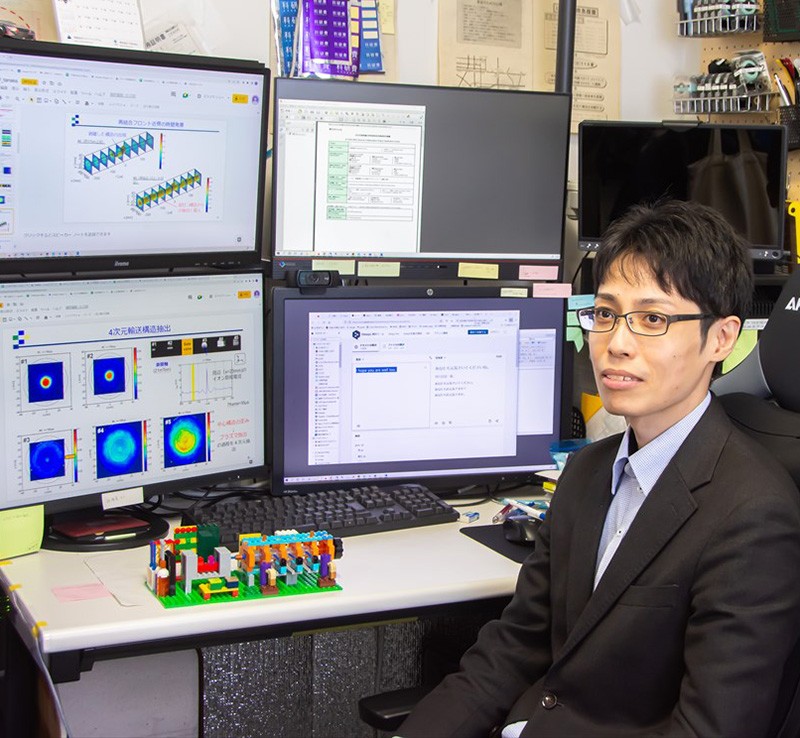
Associate Professor
Hirohiko Tanaka
[profile]
2008: Graduated from Nagoya University.
2010: Fellow of the Japan Society for the Promotion of Science (JSPS).
2011 Completed his doctoral program at Nagoya University (Doctor of Engineering) and appointed as Assistant Professor of the National Institute for Fusion Science.
2015 Assistant Professor at the Graduate University for Advanced Studies (concurrently).
2016 Assistant Professor at Nagoya University.
2022 Associate Professor at Nagoya University.
●Hobbies and passions: I’m basically staying at home due to the ongoing COVID-19 pandemic, but on holidays I’m always playing with my child. We make many courses for playing by rolling balls on them, like the ones you see in the TV program “Pythagora Switch”.
| Making full use of programming |
▶Programming is now indispensable for nuclear fusion research, isn’t it?
Ohno: Engineers who understand not only calculations but also experiments will be the most important in the future. Dr. Tanaka was already doing difficult programming at that time, so I left it to him. Even when he was a student, he and Professor Yoshiyuki Tsuji (a specialist in fluids), a professional in experimental analysis using programs, cowrote explanatory articles for academic journals. Up until now, those articles have been the most downloaded. Dr. Tanaka, you also wrote three papers as the first author and five papers in total, including those you co-authored, by the end of your first year of the doctoral program, right?
▶What are those papers about?
Tanaka: Basically, I was analyzing various fluctuating signals using programs.
Ohno: Researchers with those skills are highly appreciated when joint research is conducted using various devices. Of course, he analyzed the data from our devices, and he also analyzed the data from large devices such as JT-60 at the Naka Fusion Institute and the large helical device (LHD) at the National Institute for Fusion Science. His doctoral thesis was based on the analysis of various data from those nuclear fusion devices. Many people recognized his abilities and worked with him. That was really good.
| What is the progress of research and development? |
▶What is the current progress of nuclear fusion research?
Ohno: Nuclear fusion research is being carried out in many countries (Japan, EU, Russia, the United States, South Korea, China, and India), and the principles of nuclear fusion have been largely clarified. A fusion reactor (ITER) is currently under construction in France for use in demonstration experiments by those countries. This fusion reactor will be built for about 10 years and used for experiments over another period of about 10 years to build a more practical one. A base for remotely operating the experimental apparatus has been established also in Japan, and demonstration experiments are being conducted.
▶Are you suggesting that tungsten (mentioned above) can be used for the wall of the fusion reactor?
Ohno: ITER is an experimental device designed to demonstrate whether nuclear fusion power generation can be achieved, but it’s so large that we can’t just try it out easily. We are conducting experiments using NAGDIS-II in our laboratory first. This is a device we designed. Its name is an abbreviation of the Nagoya Divertor Plasma Simulator. It can produce fairly high-density plasma. Since Dr. Tanaka markedly improved it when he was a student, the density at which the device can produce has continued to increase. The technology for measuring it has also become more advanced. Researchers from all over the world come to do research here.
How do you measure the temperature and density of plasma? How high is the temperature?
Ohno: The temperature is generally tens of thousands of degrees Centigrade (oC). There are three measurement methods: (1) laser Thomson scattering, which is a measurement method using a laser and is said to be the most reliable method in this field, (2) a method of obtaining the density and temperature from plasma emissions, and (3) a method of electrically measuring the density and temperature by inserting electrodes for a short time and then taking them out before they melt. All these methods are adopted in NAGDIS-II. The measuring system of this device is elaborate, allowing us to measure temperature, density, and others. It is equipped with many measurement instruments that enable us to understand everything about the plasma.
| Vision for future |
▶The “NAGDIS-II” made from LEGO bricks looks fun. What are your hobbies?
Tanaka: Recently, I’ve been spending most of my free time playing with my child (6 years old). I’m also working hard with LEGO Technic (a line of LEGO bricks that include mechanical parts such as motors, gears, axles, and tires). I’ve recently bought some products with motors, so I can create even more things with them. I’m trying to guide my child towards a career in science (lol).
▶Do you have any hobbies, too, Professor Ohno?
Ohno: My hobby from my childhood is shogi. I was so into it that I even won the prefectural tournament when I was in high school. Currently, I’m enjoying watching shogi. I check game records on the internet every day. It’s off the subject again, but a long time ago, a colleague of mine in nuclear fusion research told me that he was asked by a member of an orchestra in Seto, in which he was also a member at that time, if it was okay that her child was playing shogi all day. I said, “I think it’s okay because shogi is good for brain training”. I was surprised to find out later that it was the mother of the young professional shogi player Sota Fujii. An elementary school child who plays shogi all day has incredible concentration.
▶Lastly, what message would you like to send to young people with a bright future?
Ohno: Plasma technology is used not only in solar cells and nuclear fusion but in over 80% of the processes involved in manufacturing semiconductors. For example, cutting grooves of two nanometers becomes only possible by improving plasma technology. Recently, we have been working with researchers in the field of biology, as it has been found that exposing living organisms to plasma can speed up their growth, and also with researchers in the field of materials sciences. If we use plasma technology as a central axis to connect with people overseas across different fields, and if we can improve semiconductors, reduce the cost of solar cells, and work towards solving energy problems, then I think the world will become a better place. I do hope that young people will move towards such a future.



